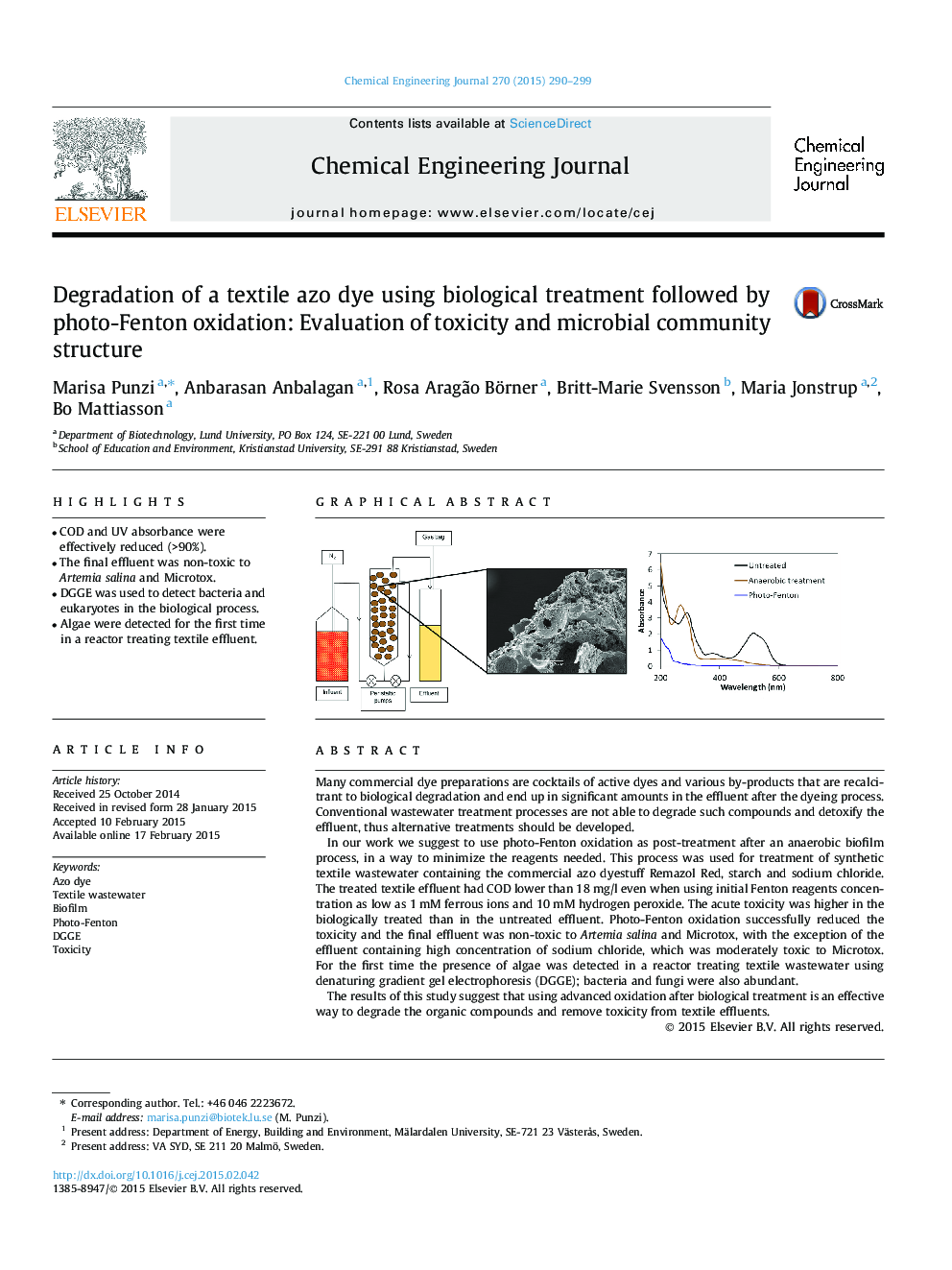| کد مقاله | کد نشریه | سال انتشار | مقاله انگلیسی | نسخه تمام متن |
|---|---|---|---|---|
| 146455 | 456371 | 2015 | 10 صفحه PDF | دانلود رایگان |
• COD and UV absorbance were effectively reduced (>90%).
• The final effluent was non-toxic to Artemia salina and Microtox.
• DGGE was used to detect bacteria and eukaryotes in the biological process.
• Algae were detected for the first time in a reactor treating textile effluent.
Many commercial dye preparations are cocktails of active dyes and various by-products that are recalcitrant to biological degradation and end up in significant amounts in the effluent after the dyeing process. Conventional wastewater treatment processes are not able to degrade such compounds and detoxify the effluent, thus alternative treatments should be developed.In our work we suggest to use photo-Fenton oxidation as post-treatment after an anaerobic biofilm process, in a way to minimize the reagents needed. This process was used for treatment of synthetic textile wastewater containing the commercial azo dyestuff Remazol Red, starch and sodium chloride. The treated textile effluent had COD lower than 18 mg/l even when using initial Fenton reagents concentration as low as 1 mM ferrous ions and 10 mM hydrogen peroxide. The acute toxicity was higher in the biologically treated than in the untreated effluent. Photo-Fenton oxidation successfully reduced the toxicity and the final effluent was non-toxic to Artemia salina and Microtox, with the exception of the effluent containing high concentration of sodium chloride, which was moderately toxic to Microtox. For the first time the presence of algae was detected in a reactor treating textile wastewater using denaturing gradient gel electrophoresis (DGGE); bacteria and fungi were also abundant.The results of this study suggest that using advanced oxidation after biological treatment is an effective way to degrade the organic compounds and remove toxicity from textile effluents.
Figure optionsDownload as PowerPoint slide
Journal: Chemical Engineering Journal - Volume 270, 15 June 2015, Pages 290–299
